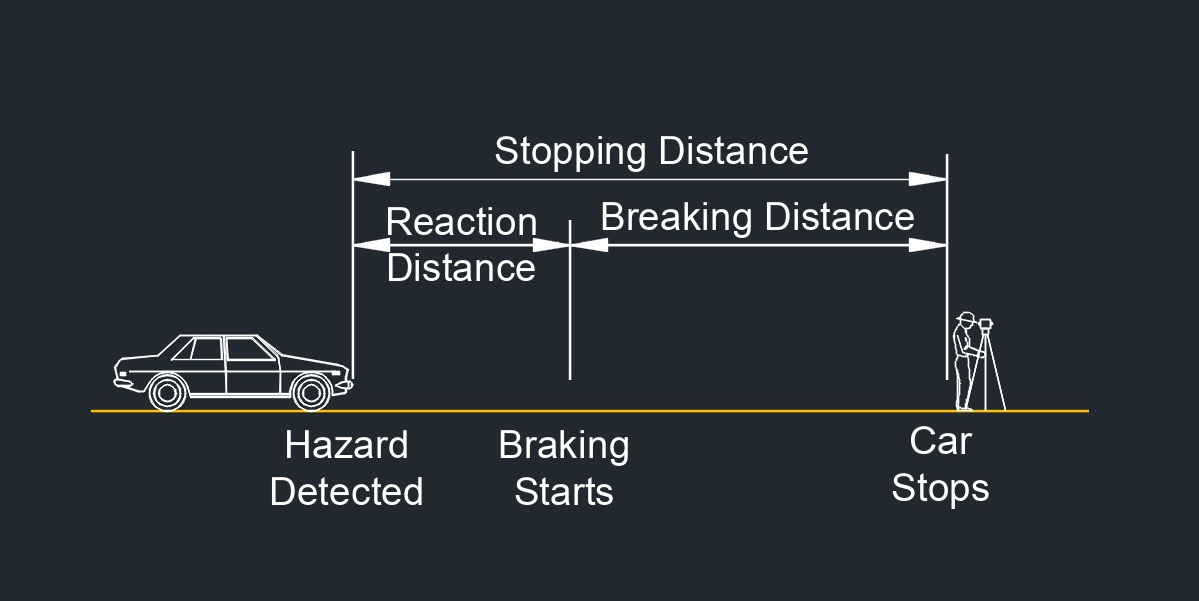Decision Sight Distance
Decision Sight Distance Formula |
||
|
\( DSD \;=\; 1.47 \cdot V \cdot t \) (Decision Sight Distance) \( V \;=\; \dfrac{ DSD }{ 1.47 \cdot t }\) \( t \;=\; \dfrac{ DSD }{ 1.47 \cdot V }\) |
||
| Symbol | English | Metric |
| \( DSD \) = Decision Sight Distance | \(ft\) | \(m\) |
| \( V \) = Design Speed | \(ft\;/\;sec\) | \(m\;/\;sec\) |
| \( t \) = Total Time for the Maneuver (Reaction Time + Maneuver Time) | \(sec\) | \(s\) |
Decision sight distance abbrevuiated as DSD, is a concept used in transportation engineering and road design to ensure that drivers have sufficient visibility along a road to make safe and informed decisions, such as stopping or maneuvering, in response to unexpected conditions or obstacles on the road. In other words, it refers to the distance a driver needs to see clearly ahead to make decisions based on their perception of the road environment.

There are Different Types of Sight Distances that Engineers Consider During Road Design
Stopping Sight Distance - Stopping Sight Distance is the minimum distance required for a driver to see an obstacle ahead, recognize the hazard, and bring the vehicle to a complete stop before reaching the obstacle. It accounts for the driver's perception reaction time, braking distance, and vehicle deceleration.
Intersection Sight Distance - Intersection Sight Distance is the distance needed for a driver at an intersection to see vehicles approaching from the side and make a safe crossing or turning decision.
Passing Sight Distance - Passing Sight Distance is the distance required for a driver to safely pass a slower-moving vehicle on a two-lane road without any risk of collision with oncoming traffic.
Minimum Sight Distance - Minimum Sight Distance is the shortest distance needed for a driver to see a specific road feature or condition, such as a curve, crest of a hill, or other potential hazard.
Overtaking Sight Distance - Overtaking Sight Distance is the distance required for a driver to safely overtake (pass) another vehicle while maintaining a safe distance from oncoming traffic.
DSD takes into account the driver's ability to perceive and react to potential hazards. This includes factors such as the driver's reaction time, the time needed to apply brakes, and the time needed for the vehicle to come to a stop. The required sight distance is based on these factors as well as the speed of the vehicle and the grade of the road.

